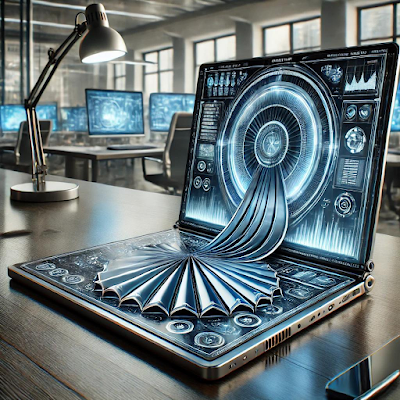2024 Latest Laptop Trends: A Look at the Evolution and Future
Latest Laptop Trends: A Look at the Evolution and Future
Summary
The laptop market has evolved significantly from high-performance gaming machines to sleek, ultra-portable devices emphasizing battery life and portability. Current trends include OLED displays and AI integration, with future innovations focusing on foldable screens and quantum computing. This article explores these trends, compares them to past developments, and discusses the challenges and opportunities they present.
The landscape of laptop technology is in constant flux, driven by advancements in hardware and evolving user needs. To understand the current trends, it is essential to look at how laptops have changed over the years and where they are headed in the future. This comprehensive analysis explores the latest trends in the laptop market, comparing them to past trends and speculating on future developments.
Past Trends: The Era of High-Performance Gaming Laptops
A few years ago, high-performance gaming laptops were the most significant trend in the market. These laptops were designed with powerful GPUs and CPUs to handle intensive gaming and multimedia tasks. Brands like Asus, with their ROG (Republic of Gamers) series, and MSI, known for their gaming laptops, were at the forefront of this trend. These machines were bulky, had impressive cooling systems, and featured RGB lighting, appealing primarily to gamers and content creators.
However, while they offered superior performance, they were not particularly portable or power-efficient. Battery life was often a secondary consideration, with most high-performance laptops needing frequent recharges.
Current Trends: Portability and Battery Life
In 2024, the focus has shifted significantly towards ultra-portable laptops with long battery life. This change is driven by the increasing number of people working remotely and the need for devices that can support a full day's work on a single charge. The MacBook Air M3 exemplifies this trend. It is incredibly thin at just 0.4 inches and lightweight at 2.7 pounds, yet it offers up to 15 hours of battery life. This makes it ideal for professionals on the go who need a reliable device that can last throughout their workday without being tethered to a power outlet [source].
 |
| MacBook Air M3 on a minimalist desk setup |
Similarly, the Acer Swift Go 14, with its compact design and OLED display, provides an excellent balance of performance and portability. Priced affordably, it offers features such as Intel's latest processors and impressive battery life, making it a popular choice among budget-conscious consumers [source].
 |
| Acer Swift Go 14 showcasing its OLED display |
Emerging Technologies: OLED and AI Integration
One of the most exciting emerging technologies in the laptop market is the integration of OLED displays. These displays offer superior color accuracy, higher contrast ratios, and deeper blacks compared to traditional LCDs. The Acer Swift Go 14's WQXGA+ OLED display is a testament to this trend, providing stunning visuals that enhance the user experience [source].
Another significant development is the incorporation of AI capabilities into laptops. The Asus Zenbook Duo, for instance, features an integrated Neural Processing Unit (NPU) that enhances performance through AI acceleration. This can improve various tasks, from photo editing to running complex simulations, making these laptops not only powerful but also smart [source].
 |
| Laptop with advanced AI capabilities showing data analysis |
The Future: Foldable Displays and Quantum Computing
Looking ahead, several technologies are poised to revolutionize the laptop industry. Foldable displays are one such innovation. While still in the early stages of development, foldable laptops could offer unprecedented versatility, allowing users to switch between tablet and laptop modes seamlessly. This technology is being explored by companies like Lenovo and Samsung, although it has yet to become mainstream due to high costs and durability concerns [source].
 |
| Futuristic foldable laptop concept |
Quantum computing is another area with potential long-term impacts. Although it is not yet practical for consumer laptops, advances in post-quantum cryptography (PQC) suggest that we may soon see laptops capable of performing secure transactions that are resistant to quantum attacks. This technology will be critical for industries that require high levels of data security, such as finance and healthcare [source].
Challenges and Opportunities: Cost and Accessibility
While these advancements are exciting, they also present challenges, particularly in terms of cost and accessibility. High-end technologies like OLED displays and AI processors are still relatively expensive, limiting their availability to premium models. As these technologies become more widespread, economies of scale should help reduce costs, making them accessible to a broader range of consumers.
Moreover, ensuring that these advancements translate into real-world benefits for users is crucial. For instance, while AI integration can enhance performance, it also requires robust software support and updates. Manufacturers must invest in developing ecosystems that fully leverage these capabilities.
Conclusion
The laptop market has undergone significant changes, moving from the era of bulky gaming machines to sleek, portable devices designed for productivity and efficiency. Current trends emphasize portability, battery life, and the integration of advanced technologies like OLED displays and AI. Looking forward, innovations such as foldable displays and quantum computing hold promise, though they come with their own set of challenges.
As these technologies evolve, they will undoubtedly transform how we use laptops, making them more versatile and powerful than ever before. By staying informed about these trends and advancements, consumers can make better choices and stay ahead in an ever-changing tech landscape.

Comments
Post a Comment